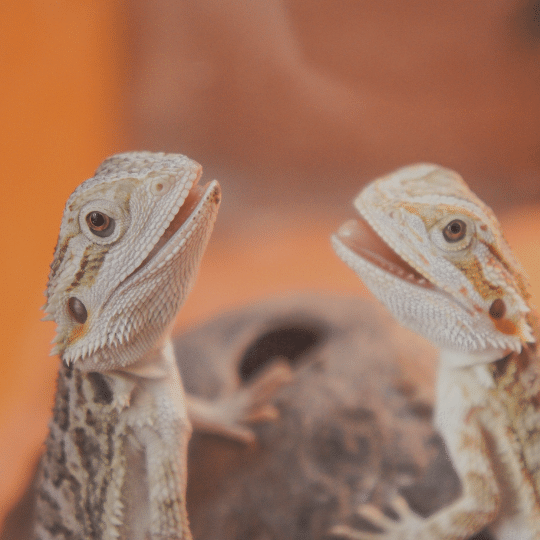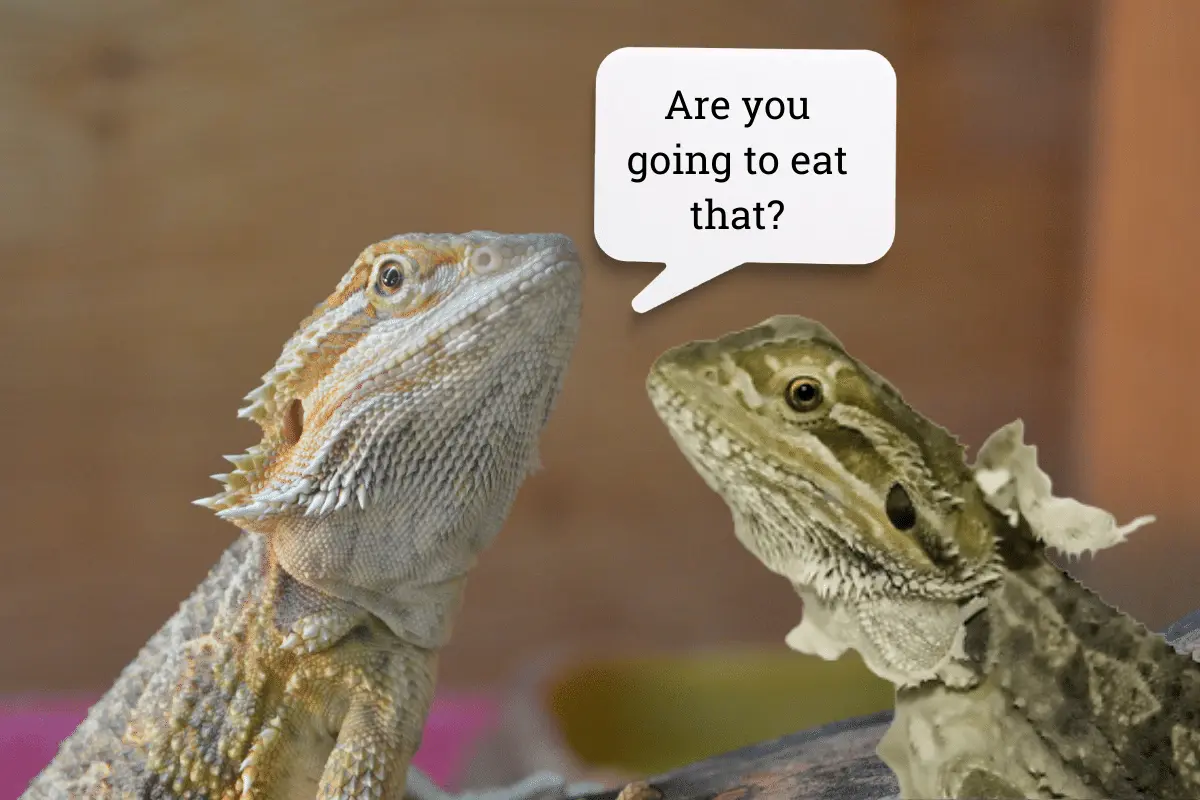A bearded dragon will shed several times throughout their lifetime, but what happens to the shedded skin? Is it true some beardies eat their shedded skin and if so why? We look to answer all these questions and more inside this article.
Do Bearded Dragons Eat Their Shed?
Bearded dragons do indeed eat their own shed, these reptiles historically ingested their own previous shed skin to reabsorb the nutrients in it, aiding in its survival. During this time, they may eat very little or not at all, but you should continue to offer them food regardless.
Bearded dragons don’t always eat their own shed. If your beardie doesn’t engage in the act, it isn’t a cause for concern, this is a completely normal behavior in this species of reptile. Regardless, bearded dragons can remain perfectly healthy whether they eat the previous shed or not.
How Often Do Bearded Dragons Shed?
Bearded dragons can shed varying numbers of times depending upon their age and necessity for shedding. Hatchlings from 0-6 months shed on average every one to two weeks because they are continuously outgrowing their old skin due to their fast growth rate. Usually, hatchlings shed every week and take approximately three days to complete.

Juvenile bearded dragons at ages 6-18 months old shed on average every 6-8 weeks because they still consistently grow at a fast rate (although not as fast as hatchlings do). Adult dragons 18 months and above shed about one to two times a year to replace damage done to their previous skin.
Once bearded dragons become seniors, it can take them up to three weeks to shed their old skin. They will usually only shed a few times a year as they age, and you will notice the frequency of your beardie’s shedding lessen each year.
Bearded dragons will also shed when their skin surface gets damaged and dirty. They will shed their old and damaged skin and replace it with new skin to protect themselves from incurring further damage. The skin of a bearded dragon can also sometimes become susceptible to parasites and tumors, and also damage from skin peeling before its ready.
Why Does My Bearded Dragon Eat Its Old Shed?
Bearded dragons eat their shed for a variety of reasons, one of them being because they need the extra nutrients to live. Another reason they do this is because it’s a historically ingrained evolutionary survival tactic utilized by their ancestors to ensure they have enough food for the uncertain and wild future.
Bearded dragons also eat their shed to avoid predators; although this is usually only with wild varieties. Wild bearded dragons will eat their shed to throw off predators and prevent themselves from being tracked.
Finally, bearded dragons also eat their own shed because they lack calcium. This is something beardie owners should take heed of as it can cause bone issues in their dragons. Without sufficient calcium, bearded dragons can develop MBD (metabolic bone disease).
What Are The Benefits Of Bearded Dragons Eating Their Shed?
There are quite a few benefits that come with beardies eating their own shed. It enables a beardie to avoid predators if faced with any in the wild, a beardie can gain any essential nutrients it’s was lacking any and can also help to replace low levels of calcium it may be experiencing. Your bearded dragons old shed is still packed full of nutrients, so the ingestion of it supplements your beardie’s health.
In the wild, food is harder to find- this means that a bearded dragon may be more likely to eat its shed to ensure it is getting all the essential nutrients it needs. Additionally, nutrients can be lost during the shedding process so it is vital that bearded dragons ingest the skin after the process is finished to help their bodies recover from the physical stress.
Should I Let My Bearded Dragon Eat Its Shed?
You can safely let your bearded dragon eat its own shed unless you suspect some sort of calcium deficiency in which case you should remedy this issue immediately. As long as their enclosure is clean and generally free of bacteria, the old shed can be eaten and used as supplemental nutrients for your dragon.
If you are concerned about your beardies calcium levels we recommend this.
Fluker’s Calcium Reptile Supplement with added Vitamin D3
- A premium calcium supplement for lizards
- Provides the calcium your pet needs for strong, healthy bones and vital bodily functions
- Vitamin D3 added for reptiles kept indoors.
- Phosphrous Free
What Are The Risks Associated With A Beard Eating Its Shed?
There are little risks associated with your Beard eating its shed. As mentioned earlier, your beardie consuming its old shed is considered perfectly normal. Many dragons engage in this behavior because of the many benefits the act brings.
How Can I Tell If My Bearded Dragon Is Eating Its Shed?
There are a couple of signs you can look for to determine if your bearded dragon is consuming its old shed. One sign is that its appetite will be reduced or it will stop eating altogether for a short period of time. Another is that you may notice that it has shed and later not be able to locate the shed lying in the enclosure.
How Can I Prevent My Bearded Dragon From Eating Its Shed?
You can prevent your bearded dragon from eating its own shed by making sure it has plenty of nutrients so that it doesn’t feel the need to feed on its shed. Another way you can try to prevent your dragon from eating its own shed is to be sure it does not encounter any calcium deficiencies.
Conclusion
Your beardie eating its old shed is very normal and a part of a healthy bearded dragon lifestyle. They do this for a few reasons, all to reap health benefits or to protect themselves. You shouldn’t worry if your dragon eats its old shed, nor prevent it from doing so. If you want to know more about caring for a bearded dragon check out our latest articles on bearded dragon care.





